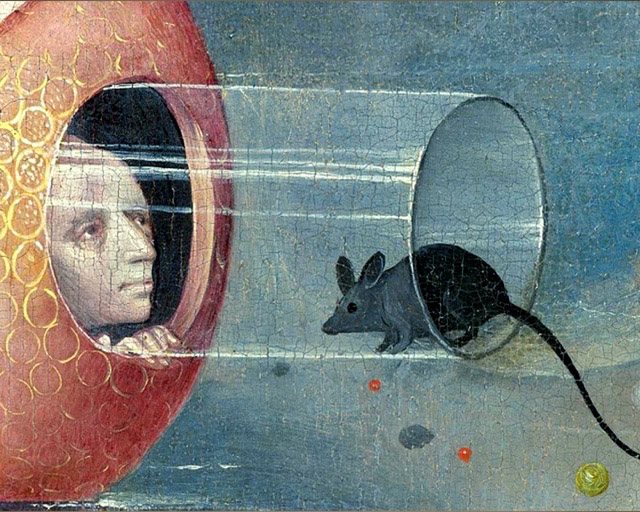I’ve long been captivated by the enigmatic art of Hieronymus Bosch. His world is a realm where creatures, both grotesque and fascinating, frolic amid surreal landscapes. It’s as if he dipped his brush into a cauldron of dreams and nightmares. As an artist and admirer of his work, let me take you on a journey through seven curiosities from Hieronymus Bosch, the enigmatic Dutch master who’s art is so beguiling.

1. A glimpse into the Late Medieval world:
Hieronymus Bosch, born around 1450 in ‘s-Hertogenbosch, a bustling town in the Duchy of Brabant, now modern-day Netherlands, flourished during the late medieval period. Hence this era was marked by a complex tapestry of religious fervor, superstitions, and the human fascination with the unknown, providing fertile ground for Bosch’s art to take root.

2. Otherworldly masterpieces:
Bosch’s masterpieces are indeed a spectacle to behold. From “The Garden of Earthly Delights” to “The Temptation of St. Anthony,” his paintings unquestionably serve as portals to fantastical realms. Each canvas is a meticulously crafted universe, teeming with bizarre creatures, lush landscapes, and admirable intricate details to straightaway get lost within.
3. Creatures unearthly and unmatched:
One of the most astonishing aspects of Bosch’s work is his ability to conjure a seemingly endless parade of unique creatures. In his paintings, you’ll find everything from human-bird hybrids to aquatic oddities, with not a single one repeating from one artwork to the next. This diversity showcases Bosch’s boundless imagination and adds depth to his enigmatic world.

4. The cacophony of symbolism:
Bosch’s work is indeed a tapestry of symbolism, rich with hidden meanings. Every creature, every detail, is a piece of a larger puzzle, inviting viewers to ponder the mysteries of life, morality, and the afterlife. It’s a journey of discovery, where each symbol unveils a deeper layer of Bosch’s intricate narrative.
5. A brush with surrealism (before surrealism):
Bosch’s art is often described as a precursor to the Surrealist movement, which emerged centuries later. His paintings challenge the boundaries of reality and consequently invite us to explore the surreal. In a sense, Bosch was an early dreamer of dreams, challenging limits and surely igniting the imagination of generations to come.

6. An enduring enigma:
Despite centuries of scrutiny, Bosch’s art remains shrouded in mystery. His works continue to inspire debate and fascination, with each viewing revealing new insights and questions. From the symbolism to the chronology of his works, Bosch’s enigmatic nature keeps art historians and enthusiasts perpetually and undeniably intrigued.

7. A painter of eternal allure:
Certainly, what makes Bosch’s art timeless is its eternal allure. It transcends any specific era or style, while drawing viewers into a world of wonder and fascination. His creatures and landscapes still remain as captivating today as they were in his time, a testament to the enduring power of the artist’s vision.
Finally, as I delve into the mesmerizing works of Hieronymus Bosch, I’m reminded that art, at its core, is a gateway to the extraordinary. It invites us to step into worlds beyond our wildest imagination. Bosch was a maestro in this realm, a painter of beautiful creatures and landscapes who continues to inspire, mystify, and enchant.

Leave a Reply